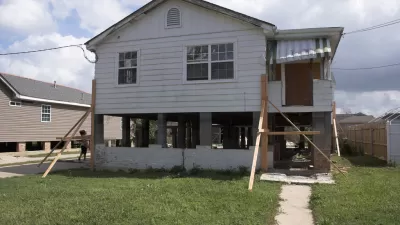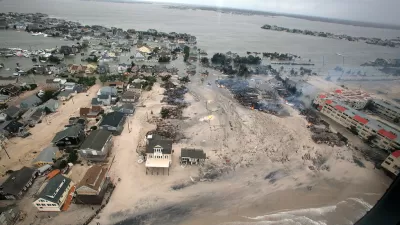Oregon Congressman Earl Blumenauer talks about the failures with federal natural disaster relief and how the country should build its resiliency to climate change with The Planning Report.
Over the past three decades, North America has seen a fivefold increase in weather-related natural disasters, with relief spending mirroring this exponential trend. As the population grows, the number of Americans residing in “at risk” areas along the coast, rivers, and in the “fire zone” also continues to rise. In the following The Planning Report interview, Oregon Congressman Earl Blumenauer explains why our current federal policy on natural disaster recovery is both fiscally unsustainable and life threatening.
Blumenauer suggests the changes in zoning, infrastructure investment, insurance, and taxation that must occur on a national scale in order to ensure a more resilient America better prepared for the climate changes we will inevitably face. The federal government is short-sighted when it comes to disaster relief and is unwilling to take money from the regular budget and devote that to mitigation. "At the same time, when we are investing in mitigation, in resiliency, in things that help make communities less disaster prone and that will unquestionably save three to five dollars or more for each dollar we spend, that comes out of the regular budget. It takes money away from defense, agriculture, and food inspection, and projects large and small."

Study: Maui’s Plan to Convert Vacation Rentals to Long-Term Housing Could Cause Nearly $1 Billion Economic Loss
The plan would reduce visitor accommodation by 25,% resulting in 1,900 jobs lost.

North Texas Transit Leaders Tout Benefits of TOD for Growing Region
At a summit focused on transit-oriented development, policymakers discussed how North Texas’ expanded light rail system can serve as a tool for economic growth.

Why Should We Subsidize Public Transportation?
Many public transit agencies face financial stress due to rising costs, declining fare revenue, and declining subsidies. Transit advocates must provide a strong business case for increasing public transit funding.

How Community Science Connects People, Parks, and Biodiversity
Community science engages people of all backgrounds in documenting local biodiversity, strengthening connections to nature, and contributing to global efforts like the City Nature Challenge to build a more inclusive and resilient future.

Alabama: Trump Terminates Settlements for Black Communities Harmed By Raw Sewage
Trump deemed the landmark civil rights agreement “illegal DEI and environmental justice policy.”

Dear Tesla Driver: “It’s not You, It’s Him.”
Amidst a booming bumper sticker industry, one writer offers solace to those asking, “Does this car make me look fascist?”
Urban Design for Planners 1: Software Tools
This six-course series explores essential urban design concepts using open source software and equips planners with the tools they need to participate fully in the urban design process.
Planning for Universal Design
Learn the tools for implementing Universal Design in planning regulations.
City of Santa Clarita
Ascent Environmental
Institute for Housing and Urban Development Studies (IHS)
City of Grandview
Harvard GSD Executive Education
Toledo-Lucas County Plan Commissions
Salt Lake City
NYU Wagner Graduate School of Public Service





























